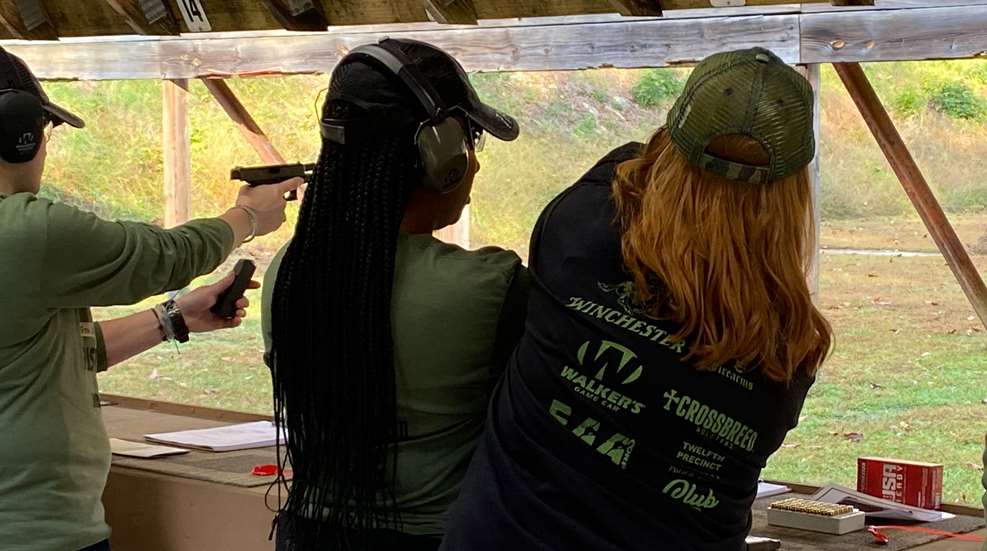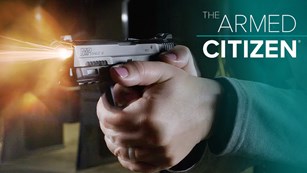
Instructors should strive to be as effective as possible. This means understanding what it takes to be a good teacher. There are good instructors and bad instructors. The difference between the two is usually an instructor’s desire to be the best he or she can be. It is those great instructors who create great students.
NRA Certified Firearm Training is considered the “gold standard.” As NRA members, we expect that NRA Certified Instructors who represent us to be the best of their kind. This is why the NRA requires anyone who wants to become a Certified Instructor to complete the NRA Basic Instructor Training (BIT) course. In BIT, potential instructors are taught the five steps in teaching a skill: preparation, explanation, demonstration, practice and teaching others.
Preparation
Preparation is the first step in teaching others a skill, such as how to use a firearm safely and properly. The instructor must make sure that he or she has all the necessary pieces of equipment to ensure successful training. Oftentimes an instructor invests his or her own money to gather all the pieces, parts, and training aids that make learning possible. In other words, you are investing in your business by putting money back into it.

Many instructors fall short on this important first step because they fail to recognize that when they advertise their firearms instruction service, they are operating a small business. To properly instruct an NRA training course you need a computer, projector, training aids and training guns, to name just a few items. The instructor must also recognize when items need to be replaced due to wear and tear, damage, and even if an item you have is out of style.
One of the most important things a firearms instructor must do is to cover the expenses for items that he or she would not normally purchase. For example, if you are teaching an NRA Pistol Course and you do not own a single-action revolver—and had never planned to own one—it is your obligation as an instructor to have one for the benefit of your class, as it is part of the curriculum.
I faced this dilemma when conducting NRA Rifle courses. My trained profession is centered around hunting, an activity I very much enjoy. My preferred firearm of choice at my “day job” and when I’m in the field hunting or recreationally shooting, is a bolt-action rifle. Because of this, almost all my rifles are bolt-action. Reflecting on the classes I teach, I asked myself “How could I effectively teach an NRA Rifle Course without a modern sporting rifle?” To make sure that I was an effective rifle instructor, I went to a reputable dealer and purchased a Ruger AR-556 for my classes. This is a rifle that I will probably never shoot recreationally, but felt I owed it to my students to have one in my classes to show as a “training aid.”
Explanation
Explanation is the second step in teaching a skill. This is the part of teaching a skill where instructors can create enthusiasm in their students. Instructors who value the quality of their class take this seriously. Unfortunately, too many instructors take the easy way out. Good instructors take the time to learn all they can about a particular topic. An instructor who can educate their students on relevant history, offer unusual facts, or display pictures or illustrations with the topic at hand, are more likely to arouse interest and create the desire to learn.

As firearm instructors, we benefit from a rich history in the development of guns. For example, when explaining how to operate single-action revolvers, do not simply go through the mechanics of operation. There are many facts that an instructor can use to spark interest and broaden discussion such as dates of production, the people credited with development, and historic and current use.
According to the NRA Basic Instructor Training (BIT) Trainer’s Guide, explanation serves two purposes. First, an instructor should explain the history, use, and application of any topic being described. This means that an NRA Instructor is required to do his or her research on a topic to provide quality instruction to students taking an NRA Basic Rifle, Shotgun or Pistol course.
The second purpose of explanation is describing the topic or subject in great detail, so as to eliminate confusion. This means using technical terms, visual and hands-on training aids, and anything else to help your students understand what you are teaching. Instructors should always use the correct terminology and describe and demonstrate the correct way to perform a skill. This means you should avoid shortcuts and follow the prescribed procedures for a more comprehensive class.
Demonstration
Demonstration is the third step in teaching a firearm skill. This is the step where teaching actually begins. If an instructor thoroughly and properly demonstrates a skill, students should have confidence in their own ability to perform it. Demonstrations should be performed as simply and straightforward as possible, so the students do not become overwhelmed.
When an instructor demonstrates a skill, it should be to teach their students. This is not the time for the instructor to show off his or her own skills. For example, an instructor should not shoot in front of their students in basic classes, regardless of the class: rifle, pistol or shotgun. The reason for this is twofold. If the instructor is having an exceptionally good day and exhibiting great shot placement, it could intimidate his or her student. If the instructor is having a bad day, it could cause students to question their teacher’s credibility.
Practice
Practice is the fourth step in teaching a skill. This is the step where the student demonstrates if they understand something or not. Under the guidance of the instructor, the student demonstrates the skill. It is important to remember that as an instructor, it is very important to always model the correct behavior we want our students to demonstrate.
Practice is the learning-by-doing stage of performing a skill. It is important that the instructor ensures that their students are realistic in their performance of a skill. For example, in the NRA CCW, Personal Protection in the Home, or Personal Protection Outside the Home courses, students perform an emergency reload during the range exercises. Empty magazines are stripped from the firearm and dropped to the ground. This is the practical application of this training, as realistic as possible as opposed to placing the empty magazine back into their magazine holder.

Teaching Others
Teaching others is the last step in teaching a skill. Many times, students learn best when teaching others. In an NRA class this is called the Coach-Pupil method. This is where, under the guidance of an instructor, one student acts as the teacher (coach) and instructs another student (pupil). This allows a student to see the teaching process through the eyes of an instructor.
Ultimately, this is what we want our students to do: teach others. Even though we want our students to teach others, we want to make sure they do it correctly. Proper education and the passage of knowledge and skills from one to another increases the number of responsible gun owners in our community. It also increases the number of 2nd Amendment advocates and individuals who vote to protect our rights.











































